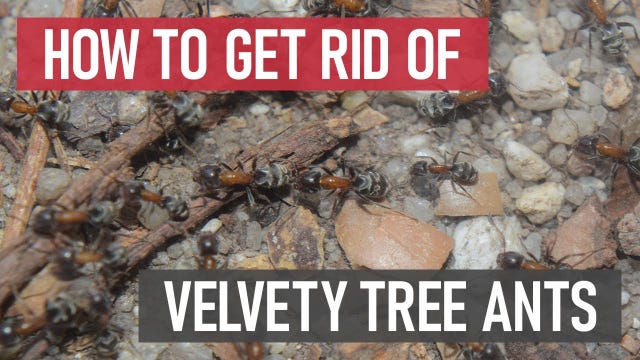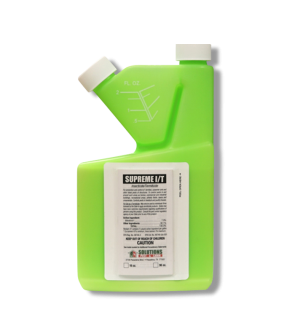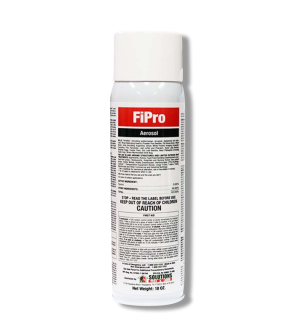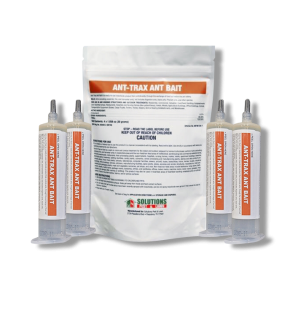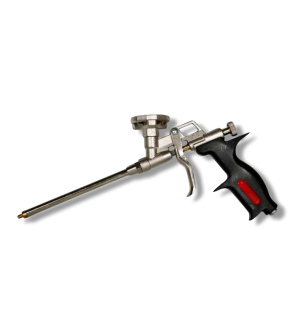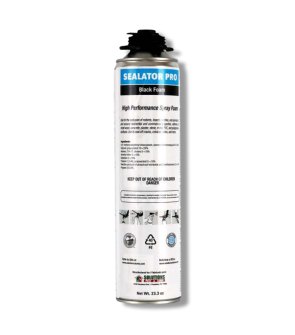Gain access to personalized product screening, the best pricing, rewards, and more!
Most Effective Products
Velvety Tree Ant Control: How To Get Rid of Velvety Tree Ants
This page is a velvety tree ant control guide. By using the products and methods suggested, you will get control of velvety tree ants. Follow this guide and use the recommended products, and we guarantee 100% control over velvety tree ants.
If you’ve ever had a picnic at the park ruined by the arrival of ants, there’s a good chance that velvety tree ants crashed the party. Velvety tree ants, also known as black velvety tree ants, pine tree ants, and silky carpenter ants, are commonly seen marching up and down trees and can very well come upon your picnic. This is why they’ve also been nicknamed “picnic ants” for their frequency of ruining picnic outings.
Velvety tree ants, as their name suggests, like to reside in or on trees, but they can get comfortable around your home if the conditions are right and can become an irritating pest. Velvety tree ants are aggressive biters and can attack you while you’re doing yard work.
In addition to biting, they also inject poison, which can be quite painful and is comparable to a scorpion sting. These pests are not to be confused with velvet ants, which are actually a type of wasp.
If you have velvety tree ants on your property, starting a control program to eliminate them would be best. Our DIY treatment guide below will tell you all you need to know about velvety tree ants and how to eliminate them from your property using professional-grade products and expert techniques.
Identification
Before you can treat, you need to make absolutely sure that you are dealing with velvety tree ants. Misidentification can lead to using the wrong treatment products, which can be a waste of time and money. Below are some common traits of velvety tree ants so you know what they look like for easy identification.

- Velvety tree ants are bicolored, with a dark brown or black head, velvety black abdomen, and light brown or reddish-brown thorax. They are small ants with workers ranging from 2.5 to 5.5 mm in length. Velvety tree ants are polymorphic, meaning you will find them in several sizes within this range.
- These ants have abdomens covered in fine hairs, hence their name.
- When viewed from the side, velvety tree ants have a single node (a bump between the middle and rear body sections) and a smooth, rounded thorax.
- They lack a stinger but will have a slit-shaped opening at the end of the abdomen that they use to spray defensive chemicals (acidiopore). Despite their lack of a stinger, these ants will deliver very painful bites.
- Velvety tree ants are often mistaken with carpenter ants due to their similar appearance and tendency to nest in similar wooden sites. The difference between these two pests is that velvety tree ants are smaller than carpenter ants, which measure 6-12 mm in length. Carpenter ants will also leave behind a coarse frass, whereas velvety tree ants leave frass with a finer consistency.
- They also share a similar characteristic with the odorous house ant in that, when crushed, disturbed, or threatened, they will emit an unpleasant odor. The smell has been described as being like a rotten coconut.
Use this description and the image above to help you properly identify velvety tree ants. If you are unsure, contact us, and we will help you identify the problem.
Inspection
After velvety tree ants have been properly identified, you can proceed with inspection. During this step, you will locate sites of velvety tree ant infestations and the conditions allowing the ants to thrive. This will help you determine where to focus pesticide applications and avoid unnecessary product usage.
Where To Inspect
Velvety tree ants prefer to nest outdoors in forested areas or any other sites that have trees, logs, and stumps. Often, they can be found in the crooks and hollows of tree branches, underneath dead tree bark, in the soil, or beneath stones and rocks.
Popular trees that velvety tree ants invade are oak, pine, cottonwoods, sycamores, alders, elms, and creosote.
They may create temporary indoor nests within wall voids, insulation, and around areas with moisture, such as where plumbing leaks are likely to occur.
What To Look For
When looking for velvety tree ants, look for their foraging trails. Follow the trails to find food sources. Indoors, trails can lead to entry points within the structure.
As they excavate wood, they will pile up the sawdust-like frass outside of nest entry points, similar to carpenter ants. Be sure to look for as many entry points as possible to locate the nest.
Foraging trails may not lead to the ants’ nest but to temporary resting places, which may become vacant when you start treatment. Remember that velvety tree ants will leave behind frass that is more finer than carpenter ant frass.
It’s important to note and treat all potential nesting sites to eliminate the ants at their source.
Their presence is often associated with a strong odor during an active infestation.
Treatment
Once you have confirmed velvety tree ant activity, it is time to begin treatment. Remember to read all product labels, follow the application instructions on these labels, and wear personal protective equipment (PPE) to stay safe.
To get rid of velvety tree ants, we recommend using more than one product and performing both an indoor and outdoor treatment.
Indoors, use Ant-Trax Ant Bait. Outdoors, apply a barrier treatment of Supreme IT Insecticide and Fipro Foaming Aerosol into tree holes and holes around wood. You may also use FiPro indoors if needed.
Step 1: Indoor Application of Ant-Trax Ant Bait
If you have velvety tree ants indoors, start with an application of Ant-Trax Ant Bait. Eliminating ants indoors first ensures you won’t deal with them when you treat outdoors later.
Ant-Trax Ant Bait is a sweet ant bait formulated with the active ingredient imidacloprid 0.01% and attractants that ants cannot resist. Once applied, it works slowly allowing the ants to carry the bait back to the colony and share with other members for complete elimination of the nest.
This product comes in a ready-to-use syringe design to ensure easy application. You will still need to wear the proper personal equipment (PPE), such as gloves, during application.
Apply 0.006 oz. of Ant-Trax Ant Bait per square yard or 0.066 oz. of product per 100 sq. ft.
Create rounded pea-size drops in sites where you have noticed velvety tree ants like near their foraging trails and other areas of activity.
Place the bait under countertops, baseboards, sinks, seats, around water pipes, water heaters, dishwasher equipment, and in cracks and crevices as well as voids where you have seen this ant harbor.
Do not treat food preparation surfaces. Keep the gel away from food and food contact surfaces.
Do not try to clean in the places where you have applied the Ant-Trax Ant Bait. Any sites cleaned with cleaning chemicals may deter ants from visiting the bait and lessen the chances of elimination.
Also, avoid spraying pesticides when you apply the bait, as it will cause it to become repellent and deter ants from visiting Ant-Trax Ant Bait placements.
Do not disturb or squish ants as you apply bait. When ants sense danger, they send signals to their nests that can result in an infestation branching and potentially becoming worse. Additionally, velvety tree ants are aggressive and will respond by releasing an unpleasant odor.
Step 2: Application of Fipro Foaming Aerosol
After enough time has passed after the Ant-Trax Ant Bait application, you can use FiPro Foaming Aerosol.
FiPro Foaming Aerosol is an effective non-repelling foaming termiticide and insecticide aerosol that contains the active ingredient fipronil 0.005%. We recommend non-repelling products at this time to avoid disturbing ant activity.
It will control ants, such as velvety tree ants, in wooden and other hard-to-reach sites that are not easily reached with insecticide concentrates. This product may be applied indoors and outdoors.
To use, simply inject the applicator straw into the nozzle.
Spray along the lengths of cracks and crevices where you’ve seen ants travel and allow the foam to expand. In voids, spray long enough for the product to expand and cover the entire surface area.
Apply the FiPro Foaming Aerosol up to a 6" length of the ant trail. Any excessive foam that is visible after application must be removed before you leave the treated area.
When applied properly, ants will travel through the treated areas without detecting the product and transfer the poison to the rest of the colony.
Hold the applicator straw into these sites for 8 seconds after foaming.
Ants affected by FiPro Foaming Aerosol will have their nervous systems impacted and die within a few hours. To avoid disturbing foraging ants, make applications when ants are not visibly active.
One application of FiPro Foaming Aerosol will control treated areas for up to 30 days.
Step 3: Barrier Treatment with Supreme IT
After ant activity indoors has stopped, or if you only have ants outdoors, apply a perimeter application around your structure with Supreme IT.
Supreme IT is a bifenthrin-based insecticide concentrate that eliminates 70 types of pests, including ants. Once dried, it creates a 90-day residual barrier that continues to repel and eliminate any ants that contact the treated area.
Determine how much Supreme IT you need be measuring the square footage of your treatment area. To do this, measure the treatment area's length and width in feet, then multiply them together (length X width = square footage).
To control velvety tree ants, use 1 fl. oz. of Supreme IT in 1 gallon of water per 1,000 sq. ft.
You will need to mix and apply this product in a handheld pump or backpack sprayer.
Conduct a perimeter application by spraying entry points like doors, windows, and other voids that ants can use to invade. Then, spray your structure’s outer perimeter 3 feet up the foundation and, at most, 10 feet out.
We also recommend treating trees since velvety tree ants favor these sites.
To treat trees, apply Supreme IT a rate of 1 fl. oz. with 1 gallon of water. Apply to the bark, completely wetting it from the bottom of the tree to the highest possible point on the trunk.
Keep people and pets away from treated areas until the spray has dried completely.
Ants will be repelled from treated areas, stopping them from foraging indoors or infesting treated areas.
Prevention
Prevention is key to staying velvety tree ant-free. Here are some preventative measures you can implement to protect your home from reinfestations.
- Velvety tree ants invade homes in search of food, water, and shelter, so clean up in and around your home to remove these. Indoors, seal loose foods like cereal, flour, and pet food in airtight containers.
- Regularly take out the trash, wipe down surfaces, sweep or vacuum the floors, and dry the kitchen and bathroom sinks. Outdoors, rake away leaves and remove plant debris, trim away overgrown shrubbery and branches, and mow your lawn regularly to the grass’s preferred mowing height.
- Address moisture issues. Locate and fix areas of the home that are accumulating moisture by fixing plumbing leaks. Use a dehumidifier to eliminate damp areas.
- We also recommend you apply exclusion methods to block off potential pest entry points. Cracks and crevices should be sealed with caulk or an expanding foam like Sealator Pro. Look for thin cracks and openings in the foundation, around window and door frames, and utility penetrations.
- Finally, keep up with the preventive applications of your pesticide products. Supreme IT will last for up to 90 days in normal weather conditions, and FiPro Foaming Aerosol will last up to 30 days. You can apply Supreme IT around your home’s perimeter quarterly and FiPro once a month to maintain control year-round.
Key Takeaways
What are Velvety Tree Ants?
- Velvety tree ants are an aggressive ant species known to invade yards and homes and deliver a painful bite.
How to get rid of Velvety Tree Ants
- To treat velvety tree ants, we recommend a barrier treatment of Supreme IT Insecticide and an indoor treatment of Ant-Trax Ant Bait, as well as Fipro Foaming Aerosol for gaps and crevices.
Preventing Velvety Tree Ant Reinfestation
- Reduce leaf litter and moisture around the home and seal off points of entry with caulk or Solutions Sealator Pro Black Foam to prevent future infestations. Be sure to keep up with regular applications of Supreme IT every 90 days to keep velvety tree ants away.






